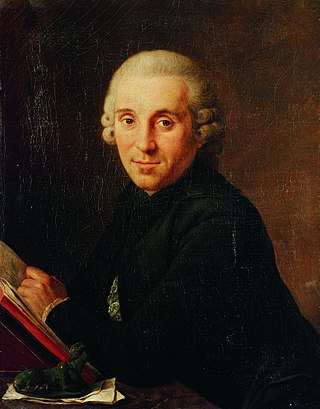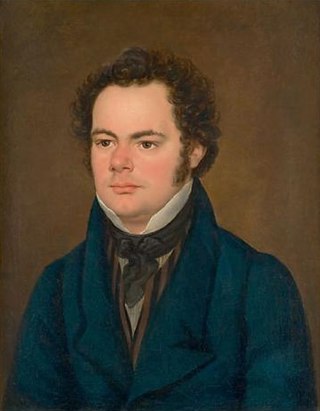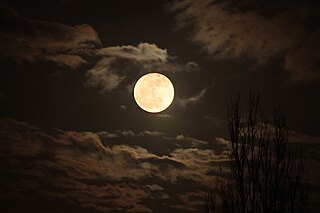
Franz Peter Schubert was an Austrian composer of the late Classical and early Romantic eras. Despite his short life, Schubert left behind a vast oeuvre, including more than 600 secular vocal works, seven complete symphonies, sacred music, operas, incidental music, and a large body of piano and chamber music. His major works include the art songs "Erlkönig", "Gretchen am Spinnrade", "Ave Maria"; the Trout Quintet, the unfinished Symphony No. 8 in B minor, the "Great" Symphony No. 9 in C major, the String Quartet No. 14 Death and the Maiden, a String Quintet, the two sets of Impromptus for solo piano, the three last piano sonatas, the Fantasia in F minor for piano four hands, the opera Fierrabras, the incidental music to the play Rosamunde, and the song cycles Die schöne Müllerin, Winterreise and Schwanengesang.
Maynard Elliott Solomon was an American music executive and musicologist, a co-founder of Vanguard Records as well as a music producer. Later, he became known for his biographical studies of Viennese Classical composers, specifically Beethoven, Mozart (biography), and Schubert. Solomon was the first to propose the highly disputed theory of Schubert's homosexuality in a scholarly publication.

Fierrabras, D 796, is a three-act German opera with spoken dialogue written by the composer Franz Schubert in 1823, to a libretto by Joseph Kupelwieser, the general manager of the Theater am Kärntnertor. Along with the earlier Alfonso und Estrella, composed in 1822, it marks Schubert's attempt to compose a grand Romantic opera in German, departing from the Singspiel tradition. It had to wait until 1897 for a (relatively) complete performance.
Johann Chrysostomus Senn was a political lyric poet of the Vormärz.

Franz Adolf Friedrich Schober, since 1801 von Schober, was an Austrian poet, librettist, lithographer, actor in Breslau and Legationsrat in Weimar.

Henrietta Catherine Agnes of Anhalt-Dessau was a princess of Anhalt-Dessau by birth, Dean of Herford Abbey and by marriage Baroness of Loën.

Rita Katherine Steblin was a musicologist, specializing in archival work combining music history, iconography and genealogical research.

Johann Baptist Mayrhofer was an Austrian poet and librettist. He is best known for his close friendship with the composer Franz Schubert.

Leopold Kupelwieser was an Austrian painter, often associated with the Nazarene movement.

Ferdinand Franz Wallraf was a German botanist, mathematician, theologian, art collector and Roman Catholic priest. His collection formed the founding nucleus of the Wallraf–Richartz Museum.

Franz Schubert's best known song cycles, like Die schöne Müllerin and Winterreise are based on separate poems with a common theme and narrative. Other song cycles are based on consecutive excerpts of the same literary work: Schubert's "Ave Maria" is part of such a song cycle based on excerpts of the same poem, in this case by Walter Scott.

Johann Ludwig Schönleben was a Carniolan priest, rhetorician, and historian.

The Wittgenstein family is a German-Austrian family that rose to prominence in 19th- and 20th-century Vienna, Austria. The family was originally Jewish and originated from the Wittgensteiner Land in Siegen-Wittgenstein, Germany.

"Der Mondabend", WAB 200, is a lied composed by Anton Bruckner in c. 1850 for Aloisia Bogner.

Franz Anton Fürst von Harrach zu Rorau was appointed coadjutor of Vienna and Titular Bishop of Epiphania in Syria in 1701, was from 1702 to 1705 Prince-Bishop of Vienna, 1705 coadjutor of Salzburg, and ruled from 1709 to 1727. He was considered one of the most notable Prince-Archbishops of Salzburg.

Joseph Kupelwieser was an Austrian playwright, librettist, dramaturge and theatre director. Working at Vienna theatres for decades, he wrote the libretto for Franz Schubert's opera Fierrabras.
Josef Kilian Schickh was an Austrian playwright who wrote mainly fairy tales, lokalposse and parodies for the Alt-Wiener Volkstheater, one of the three Wiener Vorstadttheater. He was the nephew of the journalist Johann Schickh and a contemporary of Johann Nestroy, Karl Meisl, Josef Alois Gleich and Franz Xaver Told.
Theodor Friedrich Wilhelm Willi Kahl was a German musicologist.




![Johann Carl Smirsch [de] alias Nina Wutzerl. Johann Carl Smirsch (alias Nina Wutzerl).jpg](http://upload.wikimedia.org/wikipedia/commons/thumb/c/cb/Johann_Carl_Smirsch_%28alias_Nina_Wutzerl%29.jpg/220px-Johann_Carl_Smirsch_%28alias_Nina_Wutzerl%29.jpg)
















